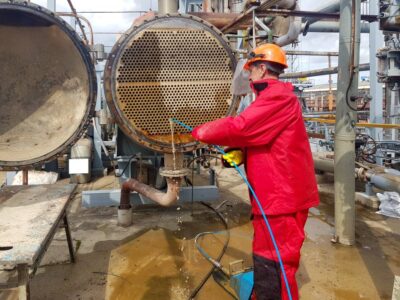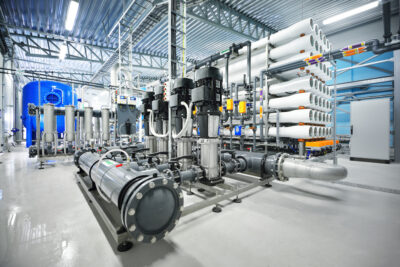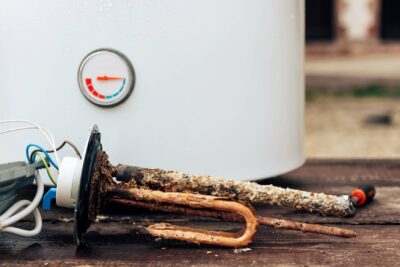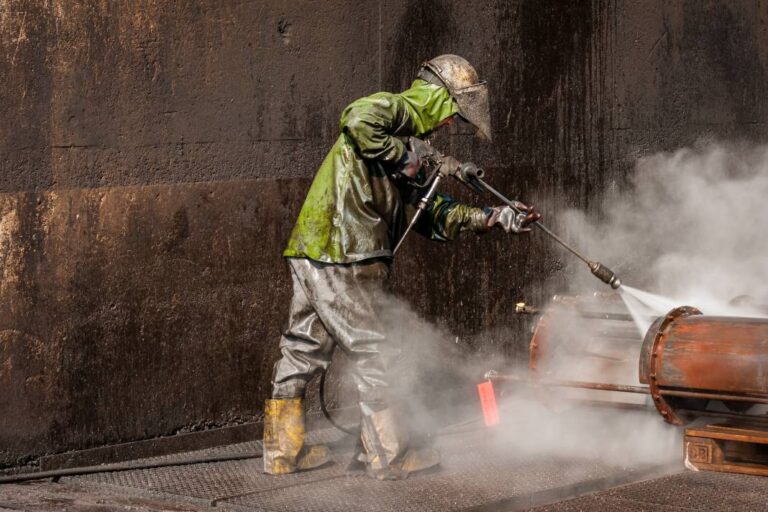Comprehensive Guide to Shell and Tube Heat Exchanger Cleaning: Chemical Names and Procedures
Shell and tube heat exchangers are among the most commonly used types of heat exchangers in industrial applications. These devices play a critical role in transferring heat between two fluids, typically a liquid and a gas, without mixing them. Over time, shell and tube heat exchangers can become fouled with deposits such as scale, sludge, and biological growths, which reduce their efficiency and can lead to costly repairs or replacements if not properly maintained. One of the most effective ways to clean these exchangers is through chemical cleaning. In this article, we will explore the cleaning procedures for shell and tube heat exchangers, with a focus on the chemicals used for each type of deposit.
Understanding Shell and Tube Heat Exchangers
Shell and tube heat exchangers consist of a series of tubes (the “tube bundle”) housed within a cylindrical shell. One fluid flows through the tubes, while another fluid flows around the tubes within the shell. The design allows for a large surface area for heat exchange, making these exchangers highly efficient for a wide range of applications, including power generation, chemical processing, and HVAC systems.
Importance of Regular Cleaning
- Efficiency Maintenance: Fouling in shell and tube heat exchangers acts as an insulating layer, reducing the rate of heat transfer. Regular cleaning restores efficiency, leading to lower energy consumption and operational costs.
- Prevention of Corrosion and Damage: Deposits can cause localized corrosion, particularly in areas where moisture and contaminants accumulate. Cleaning removes these deposits, reducing the risk of corrosion and extending the lifespan of the heat exchanger.
- Safety and Compliance: In many industries, maintaining the performance of heat exchangers is critical for regulatory compliance and safety. Regular cleaning ensures that the equipment operates within specified parameters.

Common Types of Fouling and Chemical Cleaning Agents
Different types of fouling require different cleaning chemicals. Below are the most common types of fouling encountered in shell and tube heat exchangers, along with the chemical agents typically used to clean them:
- Scale: Scale is primarily composed of mineral deposits, such as calcium carbonate, that precipitate from water when it is heated. Scale forms a hard, insulating layer on the heat exchanger surfaces, significantly reducing efficiency.
-
- Chemical Agents:
- Hydrochloric Acid (HCl): Hydrochloric acid is one of the most commonly used descaling agents. It is highly effective at dissolving calcium carbonate and other mineral deposits. However, care must be taken to use corrosion inhibitors to protect the metal surfaces during cleaning.
- Sulfamic Acid: This acid is less aggressive than hydrochloric acid but is still effective at removing scale. It is often used when there is a need to minimize the risk of corrosion.
- Citric Acid: A milder organic acid, citric acid is effective for descaling and is less corrosive to metal surfaces. It is often used in food processing and pharmaceutical applications where contamination with stronger acids must be avoided.
- Chemical Agents:
- Sludge: Sludge consists of a mixture of dirt, rust, oil, and other particulate matter that can settle in the heat exchanger. It typically forms in systems with poor water quality or where the fluid contains suspended solids.
-
- Chemical Agents:
- Alkaline Cleaners: Alkaline cleaners, often based on sodium hydroxide (NaOH) or potassium hydroxide (KOH), are effective at breaking down and dissolving organic sludge and oils. They are typically used in conjunction with surfactants to enhance their cleaning action.
- Surfactants and Detergents: Surfactants lower the surface tension of the liquid, helping to emulsify and remove oily sludge. These are often used in combination with alkaline cleaners.
- Chelating Agents: Chemicals like ethylenediaminetetraacetic acid (EDTA) can be used to bind and remove metal ions, helping to clean sludge that contains rust and other metal-based particulates.
- Chemical Agents:
- Biological Fouling: Biological fouling, also known as biofouling, occurs when microorganisms such as bacteria, algae, and fungi grow on the surfaces of the heat exchanger. This is particularly common in cooling water systems.
-
- Chemical Agents:
- Biocides: Biocides, such as chlorine-based compounds (sodium hypochlorite), glutaraldehyde, or quaternary ammonium compounds, are used to kill and remove biological growth. The choice of biocide depends on the specific microorganisms present and the system’s materials of construction.
- Oxidizing Agents: Agents like hydrogen peroxide or ozone can be used to break down organic matter and kill microorganisms.
- Chemical Agents:
- Corrosion Products: Corrosion products, such as rust, can accumulate in heat exchangers, particularly in systems where the fluids are corrosive or the materials are prone to corrosion.
-
- Chemical Agents:
- Chelating Agents: As mentioned earlier, EDTA and other chelating agents can bind to metal ions and help dissolve corrosion products.
- Acid Cleaners with Inhibitors: Mild acid solutions, often combined with corrosion inhibitors, can be used to dissolve rust and other corrosion products without causing further damage to the metal surfaces.
- Chemical Agents:
Chemical Cleaning Procedure for Shell and Tube Heat Exchangers
The chemical cleaning process involves several key steps, each of which is critical to ensuring the exchanger is thoroughly cleaned without causing damage to the equipment.
1. Preparation
- Isolation: Start by isolating the heat exchanger from the system. Close the inlet and outlet valves to prevent any fluid from entering the exchanger during the cleaning process.
- Draining: Drain any remaining fluid from the heat exchanger. It’s important to remove as much liquid as possible to prevent dilution of the cleaning chemicals.
- Safety Precautions: Ensure all safety procedures are followed, including the use of appropriate personal protective equipment (PPE) and adequate ventilation. Review the Material Safety Data Sheets (MSDS) for all chemicals to be used.
2. Pre-Cleaning Inspection
- Visual Inspection: Perform a visual inspection of the exchanger, if possible, to assess the extent of fouling. This can help determine the type and concentration of chemicals needed.
- Pressure Testing: Conduct a pressure test to check for leaks in the tubes or shell. This is important to prevent leaks during the chemical cleaning process.
3. Circulating the Cleaning Solution
- Chemical Selection: Based on the type of fouling, select the appropriate chemical cleaning agent. Mix the chemical solution according to the manufacturer’s recommendations, taking care to use the correct concentration.
- Circulation Setup: Attach hoses to the inlet and outlet of the heat exchanger. The cleaning solution should be circulated in the opposite direction of the normal fluid flow to enhance cleaning efficiency.
- Circulation Process: Use a pump to circulate the cleaning solution through the exchanger. The duration of circulation depends on the severity of fouling and the effectiveness of the chemical. This process can take anywhere from a few hours to several days.
- Monitoring: Regularly monitor the pH, temperature, and pressure during the cleaning process. Adjust the chemical concentration or flow rate if necessary.
4. Rinsing
- Fresh Water Rinse: After the cleaning solution has circulated for the required time, flush the system with fresh water to remove any residual chemicals. Continue rinsing until the pH of the effluent matches the pH of the fresh water.
- Neutralization: If an acidic cleaner was used, neutralize any remaining acid by circulating a neutralizing solution, such as a mild alkaline solution, through the exchanger.
5. Post-Cleaning Inspection
- Final Inspection: After cleaning and rinsing, inspect the heat exchanger for any remaining fouling or signs of damage. Use inspection tools such as borescopes or ultrasonic thickness gauges to check the condition of the tubes.
- Leak Testing: Conduct a final leak test to ensure the integrity of the exchanger before bringing it back into operation.
6. Reassembly and Recommissioning
- Reassemble: If the heat exchanger was disassembled for inspection or cleaning, carefully reassemble it, ensuring that all gaskets are properly seated and all connections are tight.
- Recommissioning: Slowly bring the heat exchanger back into operation, gradually increasing the flow rates and temperatures to their normal operating levels.
Best Practices for Chemical Cleaning
- Regular Maintenance Schedule: Establish a regular cleaning schedule based on the specific operating conditions of your system. Regular cleaning prevents severe fouling and reduces the need for more aggressive cleaning methods.
- Proper Chemical Handling: Always handle chemicals with care, following all safety guidelines. Use appropriate PPE, and ensure that all personnel involved in the cleaning process are trained in the proper handling of chemicals.
- Environmental Considerations: Dispose of used cleaning solutions and rinse water in accordance with local environmental regulations. Where possible, use biodegradable and environmentally friendly chemicals.
- Documentation: Keep detailed records of each cleaning procedure, including the chemicals used, the duration of cleaning, and the results of inspections. This documentation can help optimize future cleaning efforts.
- Consultation with Experts: For complex cleaning tasks or when dealing with particularly severe fouling, consider consulting with chemical cleaning experts or specialized service providers. They can offer tailored solutions and ensure that the cleaning process is both effective and safe.
Conclusion
Regular chemical cleaning is essential for maintaining the efficiency and longevity of shell and tube heat exchangers. By understanding the types of fouling and selecting the appropriate cleaning chemicals and procedures, you can ensure that your heat exchangers operate at peak performance. Proper cleaning not only reduces operational costs but also prevents costly repairs and extends the lifespan of the equipment.







